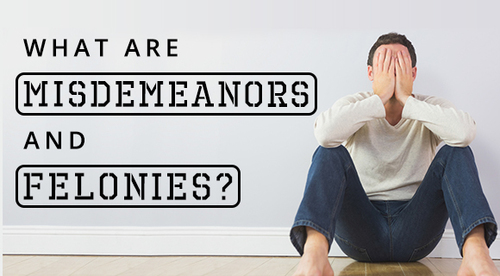In the intricate legal landscape, offenses are categorized into two primary classes: misdemeanors and felonies. These classifications play a pivotal role in determining the severity of crimes and the corresponding legal consequences. Understanding the disparity between misdemeanors and felonies is crucial for both legal professionals and the general populace.
1. Definition and Severity:
Misdemeanors and felonies represent distinct tiers of criminal offenses primarily based on their severity. A misdemeanor typically refers to a less serious crime, often resulting in minimal penalties such as fines, community service, probation, or short-term incarceration in a local jail. Examples of misdemeanors may include petty theft, disorderly conduct, or simple assault.
On the other hand, felonies denote the most serious crimes within the legal system. These offenses carry harsher punishments, including substantial fines, lengthy imprisonment in state or federal prisons, and sometimes even the death penalty in extreme cases. Examples of felonies encompass crimes like murder, arson, rape, and armed robbery.If you are facing charges related to driving under the influence in Myrtle Beach, it’s essential to seek the guidance of a skilled Myrtle Beach DUI Lawyer or Myrtle Beach Car Accident lawyer to navigate the complexities of the legal system and protect your rights.
2. Legal Implications:
The distinction between misdemeanors and felonies significantly impacts legal proceedings, particularly in terms of trial procedures, sentencing guidelines, and the subsequent consequences for the convicted individuals. Felony charges often entail more complex legal proceedings, including grand jury indictments and formal trials, while misdemeanors may proceed through simpler processes such as arraignments or plea bargains.
Moreover, the collateral consequences of a felony conviction extend far beyond the immediate penalties, often imposing lifelong limitations on various civil rights and opportunities. These may include restrictions on voting rights, firearm possession, professional licenses, and employment prospects, among others. Misdemeanor convictions, while less severe, can also carry adverse repercussions but typically to a lesser extent than felonies.
3. Sentencing Disparities:
In sentencing individuals convicted of misdemeanors or felonies, courts consider various factors, including the nature and severity of the offense, the defendant’s criminal history, mitigating or aggravating circumstances, and statutory guidelines. However, the sentencing disparities between misdemeanors and felonies are stark, reflecting the differing levels of societal condemnation and perceived threat to public safety.
Misdemeanor sentences are generally capped at one year or less in local jails, with fines typically not exceeding a few thousand dollars. In contrast, felony sentences vary widely depending on the specific offense and jurisdiction but often involve multiple years or even decades of imprisonment, along with substantial fines that can reach hundreds of thousands of dollars or more.
4. Rehabilitation and Recidivism:
Another critical aspect of the misdemeanor-felony dichotomy lies in the approaches to rehabilitation and recidivism prevention. While both misdemeanor and felony offenders may benefit from rehabilitative interventions such as counseling, substance abuse treatment, or vocational training, the severity of felony convictions often necessitates more intensive and long-term rehabilitation efforts.
Moreover, the stigma associated with felony convictions can pose significant barriers to successful reintegration into society, leading to higher rates of recidivism among felony offenders compared to those convicted of misdemeanors. Addressing this challenge requires comprehensive reentry programs, social support networks, and policies aimed at reducing the collateral consequences of felony convictions.
5. Societal Perceptions and Legal Reforms:
Societal attitudes towards misdemeanors and felonies can influence public policy debates and legal reforms aimed at addressing disparities in the criminal justice system. Advocates for reform often highlight the disproportionate impact of felony convictions on marginalized communities, advocating for measures such as felony expungement, sentencing reform, and alternatives to incarceration.
Furthermore, the advent of diversion programs and restorative justice initiatives seeks to divert low-level offenders away from the traditional criminal justice system, offering them opportunities for rehabilitation and community-based interventions rather than punitive measures.
Consult our Experienced Myrtle Beach criminal defense lawyer
If you are in any kind of criminal charge that can ruin your life, consult Myrtle Beach Criminal Defense Lawyer who will dedicate their time, resources, experience, and expertise to your case.


